Most of you will already know about the 80/10/10 diet by Dr. Douglas Graham (high-carb, high-fruit and low-fat raw vegan diet), but have you come across the 90/5/5 diet before
Ok, so let’s firstly set out the basics for those of you who may not know about the 80/10/10 low fat raw vegan diet, which very simply put means a diet that has a minimum of 80% of total daily calories coming from carbohydrates, maximum of 10% coming from fat and a maximum of 10% coming from protein and which is all raw and plant based (there are also cooked versions of the 80/10/10 diet, however we will not be looking at these in this article).
Now this ratio is a guideline and you can be a bit above or below these on a daily basis, but the overall understanding is that over a longer period of time (a month to a year and beyond) you will be eating somewhere within this ‘zone’ of macro nutrients (min 80% carbs/max 10% fats/max 10% protein).
If I was to check my average ratio over the course of the year, it would be approximately 5-6% protein, 6-7% fat and the rest carbohydrates (87% or less).
This may look closer to 90/5/5 than it is 80/10/10, but the truth is that if I were following a low fat raw vegan diet where I did not eat any overtly fatty foods like avocadoes, nuts and seeds, then my own ratio would be more in line with 90/5/5 for sure.
So whilst the 80/10/10 diet includes overt fats like nuts, seeds, olives and fatty fruits like avocadoes and durians, the 90/5/5 diet is based upon just fruits and veggies, without any overt fats.
There can be a number of reasons why people will want to have this (90/5/5) dietary ratio, which can include
• Cleansing their bodies and excluding all overt fats to facilitate a speedier detox and healing
• Improvement in athletic performance for some people
• Achieve speedier weight loss in some cases
• Balancing blood sugar issue
The question that most of you will be asking yourself now of course is: which ratio is best
Well, it is not actually as black and white as that.
Whilst some people do really well on the 90/5/5 diet with no overt fats, others experience cravings for fats and actually do need more fat in their diet. There is absolutely nothing wrong with eating healthy plant-based fats on a low-fat raw vegan diet, just for as long as you eat fats in modest amounts and the bulk of your calories comes from fruit (carbohydrates).
Whilst nuts and seeds can be optional for some people (due to personal and health preferences, i.e. allergies or intolerances), many people will benefit from having healthy amounts of fatty foods like avocados or even durians in their diet.
One factor that is important to understand in the eating of a diet that is more 90/5/5 (which actually still is withing the overall 80/10/10 guidelines), is how many overall calories the person consumes on a consistent basis and whether they actually manage to have sufficient levels of fatty acids in their diet without eating any overt fats.
If you are a super active person who expends a lot of energy regularly and so consumes plenty of calories on a daily basis, it may be possible for you to meet your fatty acid intake requirement on a no-overt-fat, raw vegan diet.
However, what if the above description does not fit you? For example, say you are a petite lady, who has little in the way of muscle and is sedentary. You have little energy expenditure and will not eat as much raw fruits and vegetable on a daily basis (and hence have less nutrient intake).
The issue that can arise with this scenario is that with a lower intake of daily calories the corresponding lower intake of fatty acids may mean your body is not receiving enough omegas 3’s & 6’s to meet its needs.
Even though you are eating enough calories to fuel your body physically through the day, your lack of calories in terms of fats can simply be too low and so a fatty acid deficiency may result.
So for less active folks, modest amounts of overt fats (both omega 3 & 6 in a healthy ratio) will certainly benefit them, just like they can benefit active people.
We know people who are athletic and eat 90/5/5 and do well on it, while we also know athletes that prefer to add some overt fats to their diet and feel much better for doing so and still remain well within the 80/10/10 ratio (or somewhere very close).
The take away message from this article should be that fats are essential for bodily health so adding healthful amounts of overt fats to your diet if so desired is perfectly fine, and that being phobic of fats like some people can be is not a healthy way forward.
Paul Tarbath
PS: Are you ready to end your confusion about the raw food diet and finally find a solution to your health concerns? Then discover exactly how ‘The Perfect Health Program’ can help you start right away!
Get 40% off with the coupon code BSPERFECT and follow this link: http://tinyurl.com/ch99d6t



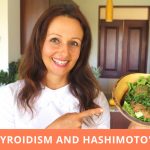
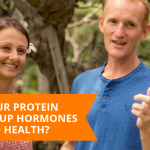
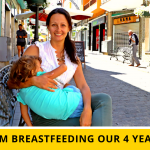

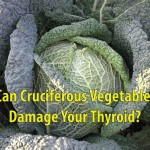
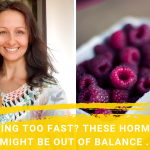
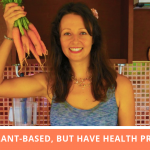
Very good article, thank you very much for covering many different subjects in your articles!!! For the past three months I’ve been eating nuts and seeds once in two weeks, for example, a handful of pumpkin seeds or a teaspoon of chia seeds or flax seeds once in two weeks. I would rather eating avocadoes instead of nuts and seeds but they’re a bit expensive in where I live. I don’t eat this way because of being a fat phobic but I just don’t feel the need to eat more fats. Maybe it’s the hot weather or maybe as I spend a lot of calories during the day and I put it back with fruit my body is already receiving the nutrients that it needs… I don’t know. For the moment I feel healthy and if I’m doing something wrong I’ll learn from my experience 🙂
Seda, you are doing the right thing! Adding or not adding fat and how often to eat it is best to be an intuitive choice. It is just some people need a bit of fat, however other promoters scared them of fats so much that they will not eat any at all. Others do perfectly fine with hardly any overt fat, like myself (Yulia) and actually feel better this way. In the beginning however, fats help with transitioning. Some people struggle to eat enough fruit and they feel far better eating some raw fats (still 811 or close) than going for cooked vegan options. Personal differences need to be considered in each situation, for sure.
Great article as usual. I’m still finding my feet with this lifestyle and it’s invaluable to receive this kind of positive input. I’m finding that if I overeat on fats (eg, one whole avocado in a day – I’m a 5’2″ 44yo woman) then the next day I get very sore knee joints. Not sure why, but I reckon listening to those messages is important!
Could you maybe sometime do an article on ‘how active is active’? I mean, I know what sedentary/moderate activity/high activity levels are to me personally, within my own parameters – which incidentally are changing as my body changes on this lifestyle – but I’m interested in what you’ve got to say about it, as you’ve got the years of experience on the lifestyle and have obviously met so many like minded/bodied people.
🙂 <3 🙂
Deb, thank you. If you search online, you will find various guidelines on how to rate your activity levels based on your age, gender and the amount of physical exercise.
Nice topic! I feel better and think the diet is so much easier and affordable eating 10 percent to as much as 12 percent fat! When my fat was about 6 percent, I needed four fruit meals to satisfy my sky-high caloric requirements: about 4,000 a day. I doubled my fat, bringing my evening salads to 750 calories. This enabled me to skip one early evening fruit meal a day.
I argue it’s healthful to include a variety of fats in your diet and not shy away from nuts and seeds just because most are processed at beyond-raw temperatures. Eating only avocadoes as overt fats is bound to produce a less-than-optimal omega-3-to-omega-6 ratio. More on this soon in Fruit-Powered Digest!
Hi Brian! Yes, everyone needs to find what works for them best within these guidelines. We are not against nuts or seeds at all, however we know and have coached people who react negatively to them or have allergies, which needs to be respected. However, if one has no issues with digesting nuts or seeds, then adding some chia and hemp seeds, or other Omega 3 and 6-rich nuts or seeds will certainly help to boost the Omega levels, although on a well-planned 90/5/5 diet it is possible to get enough fatty acids.
What feels good emotionally to the heart is the way to go. Rest i think dosent matter.
Love and Regards,
Nisha